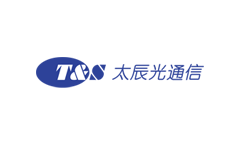Classification and Typical Application of Fiber Optic Connectors

Optical communication transmission technology is widely
concerned because of its excellent transmission characteristics, such as
large communication capacity, high fidelity, strong anti-interference
ability, rich sources of raw materials, and so on. In the 1970s, as an
excellent optical transmission medium, optical fiber began to be truly
applied and popularized. As a transmission medium, optical fiber will
inevitably produce various connections when it reaches the terminal. The
research, development, and application of fiber optic connector came
into being to ensure the reliable connection between optical fibers.
I. Classification of fiber optic connectors
Generally, fiber optic connectors can be divided into movable fiber optic connectors, reinforced fiber optic connectors, and hybrid connectors.
1. Movable fiber optic connector
It refers to the connection action with passive or active devices. It is a kind of fiber optic connector with repeatable connection, that is, fiber optic connector in the conventional sense. It is generally used for temporary connection of optical fiber devices, such as LC, FC, SC, St, etc.
2. Reinforced fiber optic connector
According to the working principle of ordinary fiber optic connector and the actual use environment of optical fiber connection, the reinforcement design method is adopted to solve the problems of environmental resistance, waterproof, and sealing of fiber optic connector.
3. Hybrid fiber optic connector
It is a component that integrates optical signal, electrical signal, and RF signal into a connector for detachable connection according to the needs of practical application. The hybrid connector can integrate two or more signal connections as required. At present, the common ones are photoelectric hybrid connector, photoelectric RF hybrid connector, etc.
II. Typical applications of fiber optic connectors
Optical fiber communication is widely used in military and civil fields because of its advantages of large communication capacity, high fidelity, strong anti-interference ability, small volume, lightweight and low cost.
The development of optical fiber communication technology and information technology complement each other. With the rapid development of optical fiber communication in military and civil fields, it is believed that the application field and industrial scale of optical communication technology will continue to expand in the future.
The quality control of T&S Communications includes a set of methods to maintain standards in the production line and each process. T&S Communications integrate quality control into methods, equipment, processes, and products and always conducts spot checks on products or procedures for daily inspection to ensure the standards are maintained.
- +1 Like
- Add to Favorites
Recommend
- Analysis of Key Technologies of Fiber Optic Connectors
- The Role of Gigabit Ethernet Transformers in Fiber Optic Connectors
- The General Structure and Common Performance Analysis of Fiber Optic Connectors
- Introduction to Fiber Optic Connectors
- Fiber Optic Connectors Glass vs. Copper
- OpDAT MV Highly Flexible Distributor Housing from METZ CONNECT is Designed for Fiber Optic and Copper Applications
- Knowledge about Fiber Optic Enclosures
- What Are the Components of Internet of Things?
This document is provided by Sekorm Platform for VIP exclusive service. The copyright is owned by Sekorm. Without authorization, any medias, websites or individual are not allowed to reprint. When authorizing the reprint, the link of www.sekorm.com must be indicated.





























































































































































































































































































































































































































































































































































































































































































































































































































































































